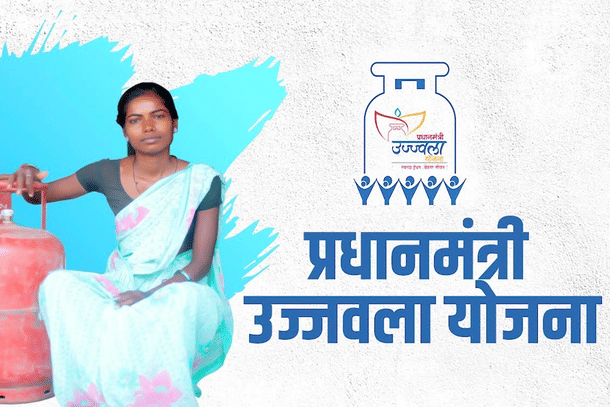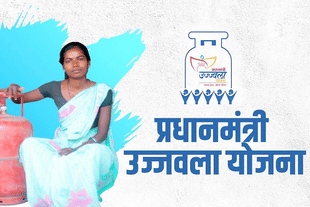Politics
Ujjwala Has Fulfilled Its Original Purpose, Now Time To Take It To Next Level
Abhishek Kar and Hisham Zerriffi
Sep 24, 2019, 01:07 PM | Updated 01:07 PM IST
Save & read from anywhere!
Bookmark stories for easy access on any device or the Swarajya app.


Pradhan Mantri Ujjwala Yojana (PMUY) has made 8 crore poor women proud owners of LPG stoves within just 40 months.
But it has been oft-criticized for the low refill rates by Ujjwala beneficiaries. Our research, recently published in the Nature Energy journal, analysed LPG cylinder sales for 25,000 consumers in rural Koppal, Karnataka, going back up to five years.
We find that Ujjwala beneficiaries were using LPG only sporadically in the initial months, and continued to depend on free solid fuels like firewood. This is seemingly a validation of the critiques of the program based on its low refill rates. The problem is that focusing solely on low PMUY refill rates is missing the forest for the trees.
When the Pradhan Mantri Ujjwala Yojana (PMUY) was launched in early 2016, the original government notification noted the lack of access and availability, and explicitly described Ujjwala as a “scheme for providing free LPG connections” to poor women.
Multiple studies had indicated that the upfront cost of a new LPG connection — about Rs. 5000, which was three times the average monthly per capita consumption expenses in rural India — was the biggest barrier to its adoption. Going by its explicit goal, Ujjwala is a roaring success leading to a near-universal access to clean cooking.
These refill-centric critiques ignore that PMUY was initiated to motivate high adoption, not necessarily high usage, in order to achieve universal coverage by 2020. The Ministry of Petroleum and Natural Gas even loosened the criteria for enrolment over the years to capture as many new customers as possible.
We argue that enrolment (adoption of LPG) at mass scale is a necessary and the very first condition to smokeless kitchens in rural India, and Ujjwala has admirably delivered what it had originally set out to do.
Given that PMUY beneficiaries are those at the economic margins, it wouldn’t have been terribly difficult to deduce that bringing more poor women into the consumer pool would pull down the average refill rates (at least initially).
But even that is not the whole story. We found that about 50 per cent of rural general LPG consumers, who are not PMUY beneficiaries, also use LPG sporadically (buy 4 or less cylinders per year).
To put it into perspective, we estimate a typical rural household of five members would require about 5 or 10 LPG (14.2 kg) cylinders to use LPG as a primary or exclusive cooking fuel respectively.
If half of the general rural consumers, who were able to afford and motivated enough to pay up the full connection cost, are not inclined to buy LPG refills regularly after years of use, should we seriously criticize PMUY if poor women are not doing so in the early months?
In other words, low LPG refills (i.e. dependence on polluting solid fuels) is not just a PMUY problem (though more acute obviously), but a wide-spread issue for rural areas in general.
Hence, Ujjwala should be viewed as a massive social welfare scheme, which in its scale has mainstreamed this major developmental challenge with serious public health, social development and environmental implications.
Rarely did debates in the Indian parliament, TV studios and newspaper front pages cover household air pollution and rural cooking energy access in the pre-Ujjwala period.
Notably, some countries in Africa are also actively exploring options to emulate Ujjwala in some form — making it a global model for expanding energy access to the most deprived.
However, it is important to recognize that rural India is still far off from having “smokeless kitchens” and Ujjwala was not originally designed to get there. Thankfully, the government has been responsive to the field realities and have initiated action that should help increase usage in the long run.
The option for consumers to buy 5 kg cylinder would require less money upfront compared to the 14.2 kg. Thousands of LPG panchayats have also been organized to raise awareness about the benefits of switching from solid fuels to LPG.
But it is clearly not enough to make LPG a competitive cooking fuel for poor people (with low and fluctuating cash availability), living in rural areas (with relatively easy access to firewood, crop residues and cattle dung), where cooking in the traditional chulha is a habit for millions of women over generations, giving a familiar taste, smell and texture for their food.
To reach that goal, we first need to accept that Ujjwala in its current form is not enough. It has served its purpose admirably, but we need mid-course modification — Ujjwala 2.0 to take on the far more difficult challenge of motivating poor to abandon free fuel.
A reasonable interim target would be to get Ujjwala beneficiaries to use LPG as primary cooking fuel (5 cylinders/ year). We need innovative ideas, followed by field trials, to build up off Ujjwala’s success of enrolment towards smokeless kitchens. There is an urgent need to conduct more research as we do not know enough to enable and fast-track the transition to LPG.
It is a complex multi-person, multi-factor household choice of cooking fuels in resource-poor settings — a behavioural change that is an expert’s nightmare. As the first step, the government should freely share anonymized LPG sales data with the wider research community.
There is no reason whatsoever to get defensive about low Ujjwala refill numbers — celebrate Ujjwala for the phenomenal achievement of its original goals, and then invest in Ujjwala 2.0 to achieve the blue flame revolution across rural India.
Abhishek Kar defended his Ph.D. dissertation on India’s LPG transition and Hisham Zerriffi is an associate professor at the University of British Columbia in Canada.





